I’ve been drawing for years but it was only recently that I started using fountain pens for drawing.
While disposable technical pens are convenient, they can be expensive in the long run because you have to replace them frequently. Plus the felt tips get worn out with use which creates ragged lines.
Fountain pens have a number of advantages over using technical pens. The Lamy Safari fountain pen has a steel tip with a tiny ball welded onto the end. Not only will the tip last a long time, it has a nice smooth feel when you draw with it.
When you run out of ink, you can just pop in another ink cartridge and continue drawing.
It’s also possible to use a converter so that you can fill it up with your own ink. This option opens up many possibilities for trying out new ink colors, and different types of inks.
Fountain pens do require a little bit of care but it’s not difficult or time consuming. They’re much easier to clean than a Rapidograph technical pen for example.
Full disclosure: Gold Spot sent me these 3 Lamy Safari pens for free. But that has no impact upon my review. I only recommend products that I enjoy using.
Table of Contents
How Do You Pronounce Lamy?
It’s pronounced Lah-me and it rhymes with Tommy. Here’s how Lamy is pronounced in a YouTube video from the official Lamy channel.
The above video should start playing at the 29 second mark which is when they pronounce it in German.
Which Fountain Pens Are Good for Drawing?
The Lamy Safari fountain pen is often recommended by artists for ink drawing. It’s a quality fountain pen that’s available at an affordable price. You can use disposable ink cartridges that are prefilled with ink. A converter is similar to a cartridge, but you can fill it with your own ink. I describe how to do this later in the post.
When I first looked into drawing with fountain pens the Lamy was recommend frequently by artists. Lamy Safari was also the pen that was recommend to me by Goldspot Pens.
Some fountain pens can cost hundreds of dollars so the Lamy Safari makes sense as a way to try it out without breaking your budget.
Fountain Pens vs Felt Tip Drawing Pens
There are some differences between fountain pens and the disposable technical pens.
For one, the ink that comes with the Lamy isn’t waterproof. This means that it will run when you apply watercolor over it. That’s something you can use for effect, but most artists are looking to avoid this.

Another important point is you don’t want to leave a fountain pen sitting around unused for months. Eventually, you’ll have issues with the ink not flowing properly because the ink is drying in the nib.
It’s a good idea to clean the ink out of your fountain pens if you plan on leaving them unused for extended periods.
In other words, there’s a little bit more maintenance with using a fountain pen but it’s not a big deal.
I use to use the technical pens from Rapidograph and those were difficult to clean. In comparison, these Lamy fountain pens are much easier to clean and fill up with ink. There are fewer parts in a fountain pen and they’re not as delicate.
What’s the Difference Between a Cartridge and a Converter?
A cartridge is a sealed plastic cylinder that’s filled with ink. Once you use up the ink, you can dispose of the it and install a new one. The design of the converter allows you to fill it with your own ink and it’s reusable. It has a plunger that you can move up or down by twisting the end of it.

Essentially, a converter works like a regular cartridge but it’s also reusable. This means you can buy a large bottle of your favorite fountain pen ink and fill the converter with it. Some inks aren’t available in cartridges, so this is a nice option.
Another benefit is that you can reuse the converter many times. A large bottle of ink should be less expensive than buying multiple prefilled cartridges.
You may find that you like the convenience of a cartridge. There’s nothing wrong with this. I use my yellow Lamy Safari for taking notes and for casual writing, so I use cartridges in it.
Regular fountain pen ink is usually water soluble so water will dissolve it. If you try to apply watercolor over the top of water soluble ink, it will ruin the drawing.
For drawing, I prefer an ink that isn’t water soluble. That’s where the converter comes into play. I like the Platinum Carbon ink. It’s water resistant and it’s safe to use in a fountain pen.
Sometimes you can use that as an effect to get softer lines. But in the post, I assume you’re looking to be ink that doesn’t run as you brush over it with watercolor.
Filling a converter is an extra step, but once you try it, you’ll find that it’s rather simple to do.
The converter is also useful when it comes time to clean out your fountain pen. That’s because the piston will allow you to dip the nib into water and draw ink in and out of the converter and through the nib.
This will help to flush out the ink, which I demonstrate in the video.
Is It Necessary to Flush Out a Lamy Fountain Pen Before Use?
Lamy tests out their pens in the factory with blue Lamy ink, so you might want to flush it out if you’re changing colors or brands of ink. If you’re filling it with the same type of ink and color, then it’s probably not necessary unless you’re having issues with clogging.
Lamy tests each fountain pen to ensure that each pen is working properly. One small issue is that some traces of the blue ink are still in the pen.
The traces of blue ink aren’t an issue at all if you plan on using the blue Lamy ink that comes with the pen.
Some people just fill it with whatever ink or color they want without cleaning it first. It’s possible to get away with this, especially if you’re using blue or black ink.
However, I think it makes sense to flush it out first because it doesn’t take much time.
Can You Use Waterproof Ink in a Fountain Pen?
Yes, you can use waterproof ink in a fountain pen, but you want to use one that’s made for use with fountain pens. Otherwise it may clog, cause flow issues, or even damage the pen. You’ll also need to use a converter that fits your brand of fountain pen.
I explain how to use waterproof ink in a converter later in this post.
How to Install a Cartridge in a Lamy Safari Fountain Pen
Installing a cartridge in a Lamy Safari is easy. Basically, you just take the cap off, remove the cardboard ring, install the cartridge, and then screw the cap back on. Give the ink time to flow into the nib and then you can start writing or drawing with it.
Below are the more detailed step-by-step instructions.
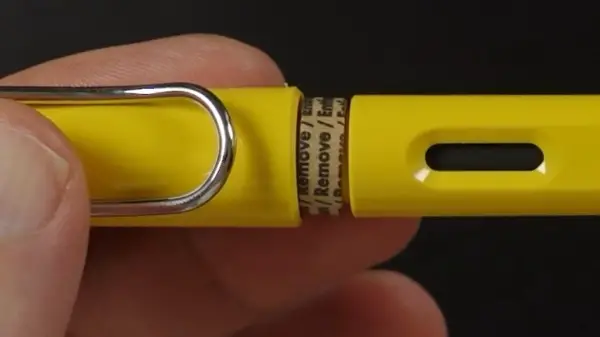
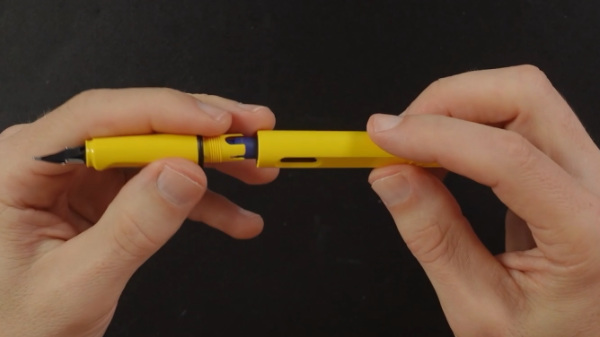
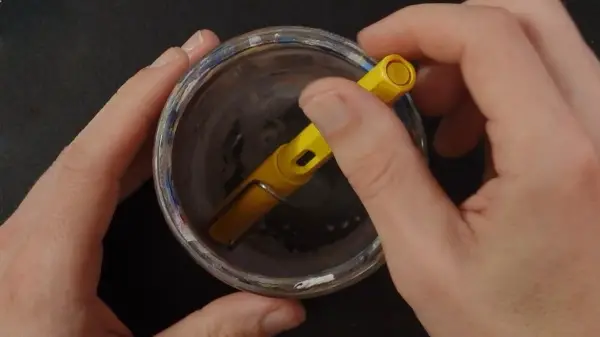
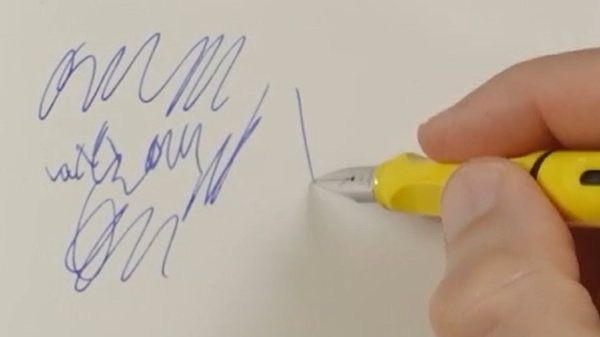
How to Fill a Converter With Drawing Ink
Filling a fountain pen converter with ink is pretty simple. You insert the converter into the pen, twist the end of it so the plunger is at the bottom. Then insert the nib of the pen into the bottle of ink and twist the plunger up to draw up the ink.
The more in-depth instructions are below. But first, you need to purchase a converter that works with your fountain pen.
Which Converter Works With a Lamy Safari Fountain Pen?
Some fountain pens can use a universal converter while other brands have a proprietary converter that only works with that brand. Lamy has a proprietary converter so make sure that you get the Z28 converter if you’re using the Lamy Safari.
If you’re using some other brand of fountain pen, you’ll want to do some research to make sure that you get a converter that fits it.
Below is the 5 pack of converters that I bought from Amazon. You can also find Z28 converters in single packages on Goldspot.
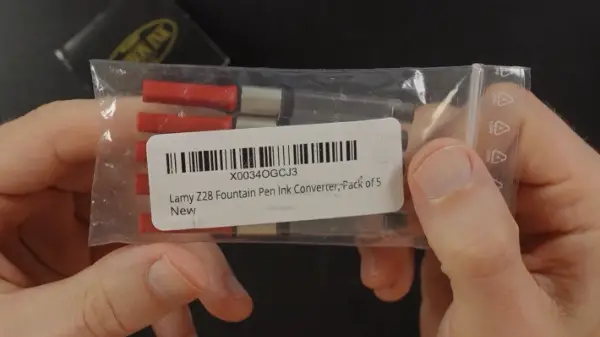
Step by Step Instructions for Filling a Converter With Ink
Below are the step by step photos and the instructions are in the captions. If something doesn’t make sense you can watch the YouTube video at the top of the post.
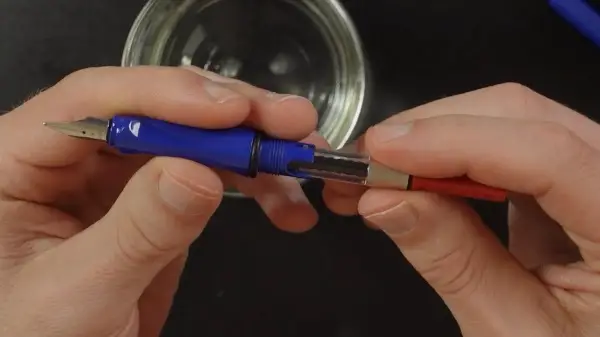
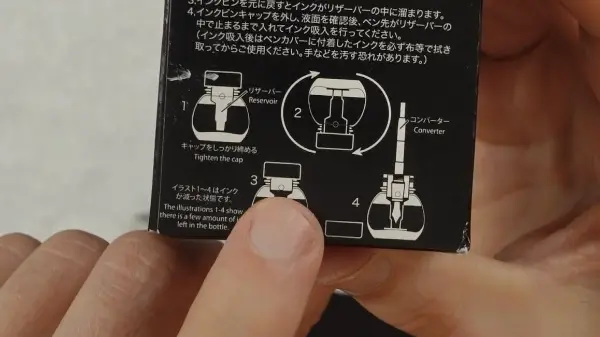


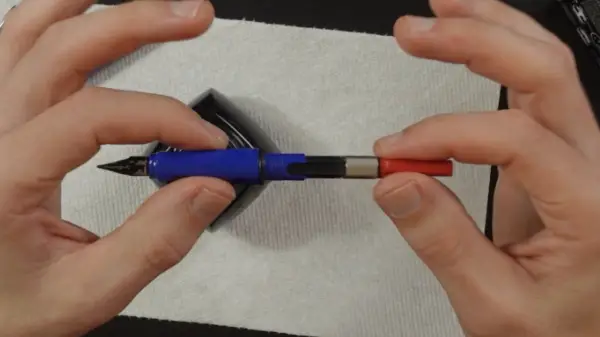
There’s not too much that can go wrong. One thing that might happen is that you dip the pen too far into the ink and you get ink on the handle. That’s okay, you can clean it off with a rag or paper towel.
Another issue is that sometimes it doesn’t draw up ink, or only just a little bit of ink.
If that happens, just repeat the procedure. While the nib is in the ink bottle, twist the plunger so that it’s all the way down, and then twist it in the opposite direction to make the plunger go up.
Sometimes it doesn’t fill up because you don’t have the nib deep enough in the ink bottle.
You want to dip the nib of the pen into the bottle so that the ink covers up about 75% of the nib. It’s really simple once you do it a couple of times, you won’t have to think about it after you get the hang of it.
Twist the barrel of the pen back on once there’s enough ink in the converter. It helps to wipe off the excess ink from the metal nib with a paper towel. Fold the towel so that when it soaks up the ink it doesn’t get on your hands like it did in my video.
The rest of the process is the same as using a cartridge. Put the cap back on and allow the ink to flow into the nib.
Drawing With a Fountain for Watercolor Sketches
In the video, I demonstrate how I use ink and watercolor for sketching in my sketchbook. Below is a photo of the sketch of a boat harbor that I drew with the Lamy Safari.

I normally sketch with an inexpensive mechanical pencil to layout the basic shapes. If the subject is simple I might start drawing with the pen. It’s up to you if you want to sketch with pencil first.
Once I’m happy with the drawing I will use a blowdryer to make sure the ink is dry. Thicker applications of ink may take longer to dry than thinner lines. Using a hairdryer to dry the ink ensures that there won’t be any surprises when you paint over it with watercolor.
It’s not fun to paint over a drawing and have the ink smear as you paint over it. Lighter colors like yellow are more affected by this than a darker color like Ultramarine Blue.
When I’m sketching outdoors I’ll just let the ink drawing dry naturally in the sun while I set up my watercolors. If you’re not sure it’s dry you can test out a section by brushing over a line with a small amount of water.
Which Paper Is Suitable for Ink and Watercolor?
Paper selection is an important consideration when you work with ink and watercolor. When I use a paper that I’ve never used before, I will take the time to test out the inks and watercolors that I plan on using on them to make sure that they work as I expect.
There are some papers that are more suitable for ink and watercolor than others. It might be the sizing on the paper, or perhaps the type of ink that you use, but some inks will lift and smear as you paint over them with watercolor, regardless of how long you let them dry for.
In the example painting, I’m using an Alpha series sketchbook from Stillman and Birn. Here’s the Alpha series on Amazon. This is the page for the Alpha series on Blick. It has a smooth surface and it’s suitable for thin washes of watercolor. The pages buckle a little bit, but I don’t mind it for sketching.
Final Thoughts
Using a fountain pen for drawing can be very satisfying. I like the fact that the nib doesn’t wear out like a felt tip pen does. Another disadvantage to felt tip pens is the lines get more ragged and lighter with use.
Being able to fill a converter with the type of ink that I prefer is another advantage that fountain pens have over other pens.
And I also feel like I’m not creating as much waste as I do when I buy disposable drawing pens.
Fountain pens seem to have the convenience of disposable pens and only require minimal maintenance. Give them a try and see what you think!



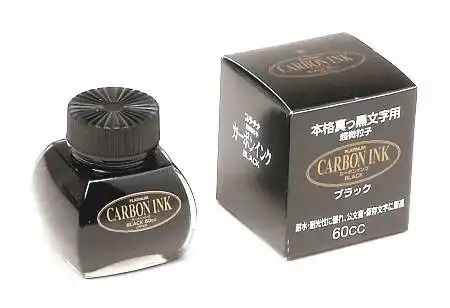
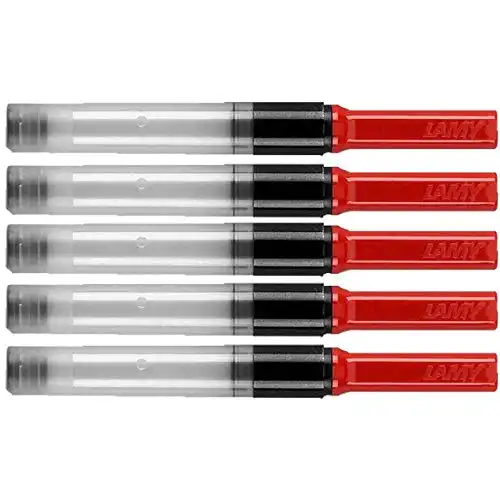

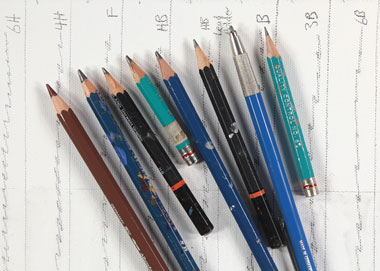
Hi Chris!
Thank you for this thorough yet concise email on how to fill, use, and get the drawing results I’d like with a Lamy fountain pen and waterproof ink. For some reason, I thought artists, such as yourself, had to sketch and color-in drawings with layers, like batik, instead of using waterproof ink, LOL!
Thank you, as well, for all your tips, especially #4. about not shaking the ink once the converter is loaded. You have saved me several humorous, damaging moments with this tip alone! 😉
At this time I’m so busy making renovations and getting ready to sell my humble flat. I will save your email and refer to it often when I have a little bit more time to focus on this exciting new craft and will use your links as an additional thank you for your time.
Happy Early Holidays to You amd Yours!
Hi Jean,
Thanks, I’m glad you found my post useful! Yep, you definitely want to avoid shaking the pen and just let the in flow into the nib…unless you like having ink stains on your desk, floor, ceiling etc…lol.
Thanks,
Chris
Thank you for sharing your tips on fountain pens. very helpful for beginning artists. much appreciated